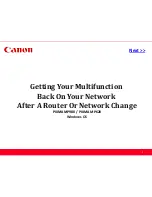
T
file:///C|/Documents%20and%20Settings/Miz%20B/My%20Do.../Nuvera%209.0%20UGTA_FINAL/English/hdi_p_038_VIPP.htm8/13/2008 2:19:41 PM
Using VIPP
Many Service Bureaus and Data Centers continue to print files written in Xerox's
LCDS (Line Conditioned Data Stream)
language; a
legacy from the days of mainframes and pin-fed impact printers.
Many people are conducting their businesses and document production operations in networked, PostScript-based environments.
Given these divergent realities, this may be the right time to convert LCDS-based documents to PostScript.
What is VIPP?
Xerox Variable Data Intelligent PostScript Printware (VIPP) is a powerful system of fully compliant PostScript technologies for the
production of personalized documents. The FreeFlow VI Interpreter refers to the software used to interpret the VIPP commands. VIPP
is used to discuss anything related to the VIPP commands or VIPP based applications.VIPP consists of a set of macros that reside on
the PostScript interpreter, eliminating many of the time-consuming steps associated with traditional variable information workflows by
enabling Dynamic Document Construction (DDC) at the printer. By dynamically creating the document at the printer, VIPP dramatically
decreases the amount of time that it takes to compose and print documents.
Xerox VIPP is an open programming language that exploits the flexibility of PostScript in constructing dynamic documents. Because
VIPP has a powerful merge engine for creating personalized business documents, it allows variable documents to be composed at the
printer in real time. It also facilitates the migration of LCDS-based files to a networked, PostScript environment, resulting in documents
that are easy to manipulate and modernize, and that can be printed to a networked Xerox PostScript print device.
How it Works
VIPP uses the same "Dynamic Document Construction" concepts as the Xerox LCDS printers. Fonts, forms, and images reside on the
printer, and formatting is controlled by a template (JDT) called by the job. The bit-heavy resources stored at the printer are merged with
the variable data at run-time. The result is an efficient printing model that saves valuable network bandwidth. With VIPP-based
documents, only the variable data is sent over the network.
The VIPP Thin Printer (VTP) allows the generation of Adobe PDF documents from VIPP based variable data applications. Capabilities
include the ability to split PDF files into individual PDF sets and add interactive features such as PDF Bookmarks, PDF Notes or URLs.
The VTP supports personalized printing and 1-to-1 marketing by extending output printing capabilities to support production PDF
creation that enables viewing, archiving and Web presentations of variable-information documents.
Programming options
A VIPP programmer can take advantage of control features that enable the creation of VIPP jobs that emulate or enhance the original
LCDS application without requiring changes to the original data set. There are many features that can be added to modernize the
document without changing the source program or data file. These features include:
Configuring the system to run a VIPP job
To support running VIPP jobs, refer to your System Administrator and the System Administrator Guide. Also, for complete information
about the FreeFlow VI Interpreter and the VIPP language, consult the FreeFlow VIPP Language Reference Manual on the FreeFlow VI
Suite Documentation CD delivered in the VIPP ship kit.
The FreeFlow VI Interpreter (FF VII) is an optional software license installed on the FreeFlow Print Server that you can enable to
interpret the VIPP language (Variable-data Intelligent PostScript Printware).
●
rounded corners
●
data-driven graphics
●
reusable data elements
●
multiple form layouts
Home
|
Resources
|
Search
|
Index
|
How Do I?
|
System Tour
|
|
Maintenance
Problem Solving
About this Site
87 of 256
















































